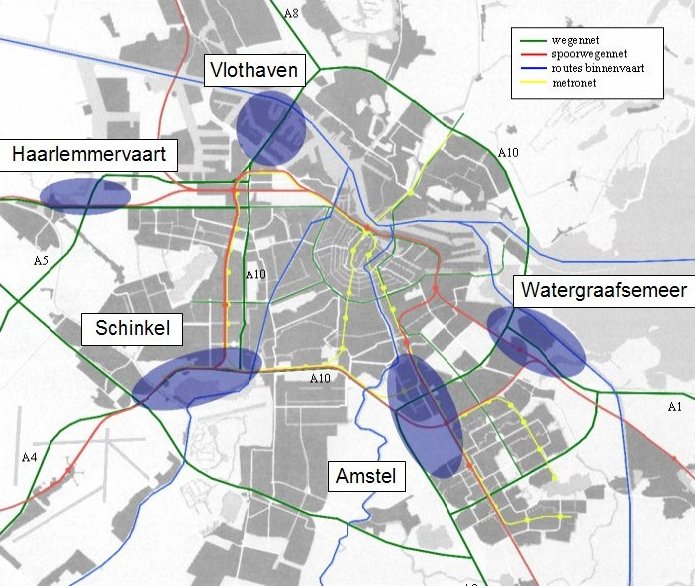
Figure 1. Locations in Amsterdam
| Distribution from LSP to the city centre | |||
| Load capacity of the vehicles | 1 citybox | 2 cityboxen | 3 cityboxen |
| Total distance travelled | 266 km/day | 102 km/day | 161 km/day |
| Total number of vehicles | 79 | 77 | 76 |
| Distribution from WDC to the city centre | |||
| Load capacity of the vehicles | 1 citybox | 2 cityboxen | 3 cityboxen |
| Total distance travelled | 2343 km/day | 1027 km/day | 858 km/day |
| Total number of vehicles | 122 | 95 | 91 |

